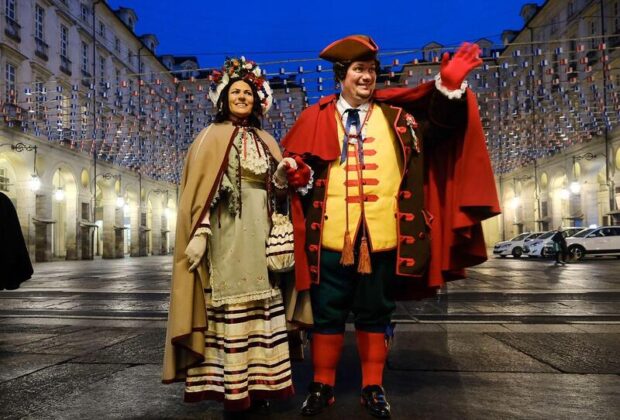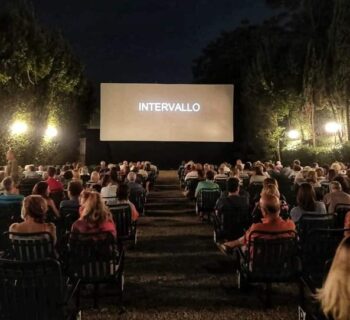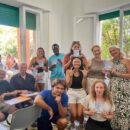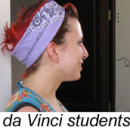Who are the two characters portrayed on the walls opposite the bathrooms of our new school premises in Turin? They are Gianduja and his wife Giacometta, the undisputed protagonists of the carnival and of all of Turin’s folklore events. Gianduja is the carnival mask representing Turin, just as Harlequin represents Bergamo and Pulcinella Naples. His name probably derives from the dialect expression “Gioann dla doja”, meaning “Giovanni of the tankard”, because Gianduja is very fond of Grignolino wine.
Who is Gianduja?
Unlike many other Italian masks, Gianduja is not taken from the Commedia dell’Arte, a form of popular theatre that originated in Italy in the sixteenth century. It was created, however, at the beginning of the nineteenth century by Turin’s puppeteers Giovanni Battista Sales and Gioachino Bellone. Gianduja is a “good family man” and differs from other masks in that he is a faithful servant, who deals with aristocrats without trying to take advantage of them. In short, it would represent the values of a calm and conservative people, free from revolutionary ideas.
His eighteenth-century clothing is supposed to confirm his beliefs in the values of the Ancien Régime: Gianduja wears, in fact, a brown jacket with red borders, a yellow waistcoat, knee-length green trousers, red stockings, and shoes with brass buckles. He also always wears a wig and a tricorn hat, a very popular headdress in the eighteenth century.
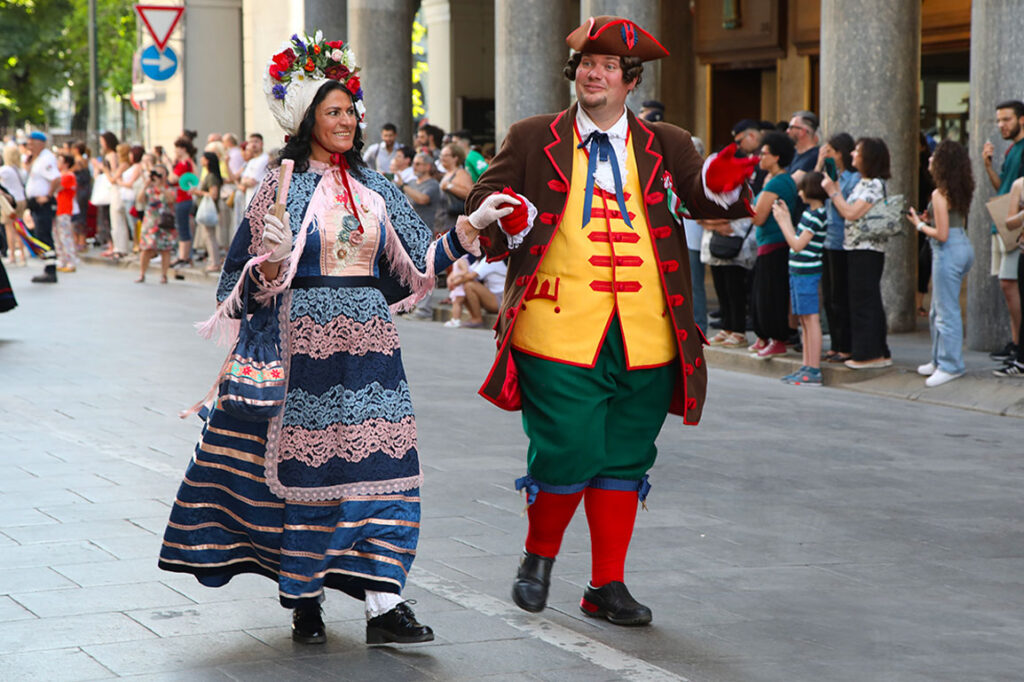
However, behind his innocent appearance, there is a vein of political satire…
Initially, the puppet was called Giròni (Gerolamo in Italian), but his shows in the Piedmontese dialect ran into censorship problems first with the Ligurian government, then the city of Turin, both Napoleon supporters. So Giovanni Battista Sales and Gioachino Bellone took refuge in Castell’Alfero, in the province of Asti, where they were helped by the De Rolandis, the family of patriot Giovanni Battista De Rolandis who, together with Bolognese Luigi Zamboni, seems to have suggested replacing the color blue in the Italian flag with green. And precisely at that time, the puppeteers changed the name of their puppet to Gianduja and added a tricolor rosette to his hat, to symbolize the new Italian nation that was being created. The farmhouse where Gianduja was born still exists today and can be visited; it is called ‘l Ciabòt ëd Giandoja and is located in Callianetto, near Asti.
Even after the death of its inventors, Gianduja continued to be the protagonist of shows thanks to other puppet companies, in particular the Lupis from Ferrara. The latter’s artistic talent and the fact that the character had become the spokesman for the ideals of the Risorgimento and the Unification of Italy fascinated many intellectuals of the time and made it increasingly popular.
Over time Gianduja became established as a symbol of Piedmontese patriotism, but also a stereotype of the Piedmontese people, characterized by common sense, goodness, and keeping their feet firmly on the ground. He thus became the protagonist of Turin’s carnival, when Gianduja’s sweets were thrown into the crowd. These sweets, still found today in some confectioners in Turin’s historic center, looked like large round wafers and were so-called because they were wrapped in hexagonal papers decorated with the image of Gianduja.
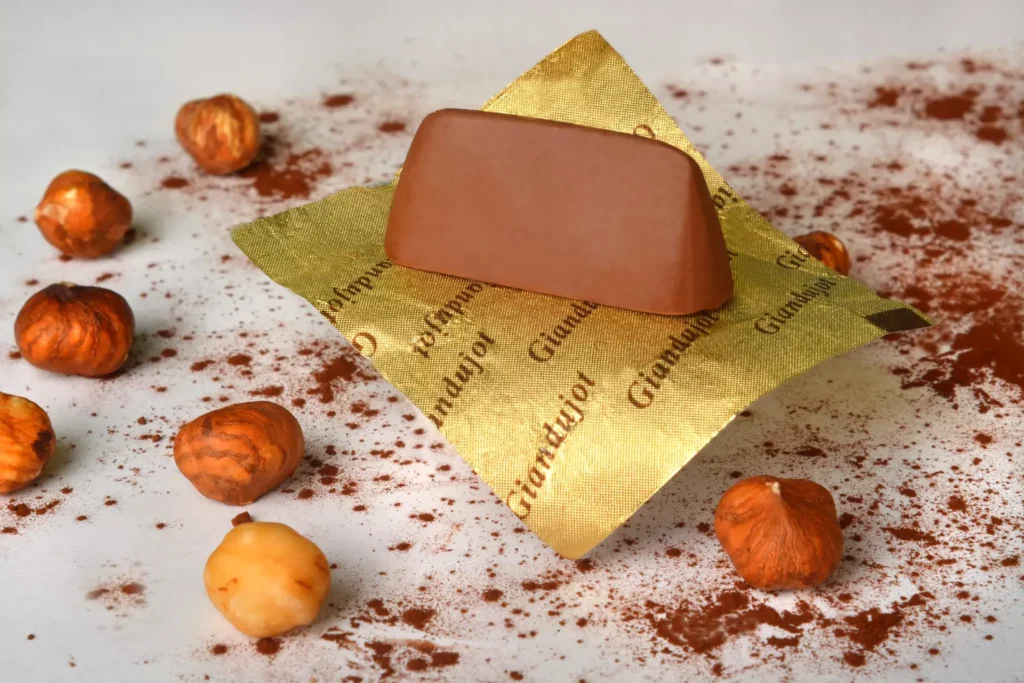
The famous Turin chocolates
During the carnival of 1865, an actor dressed as Gianduja offered the “gianduiotti”, the famous Turin chocolates, for the first time. Gianduiotti, i.e. “elongated” pralines made with chocolate and hazelnut paste, already existed at the time of Napoleon’s import restrictions, when Turin’s pastry chefs had to cut down on their use of cocoa, mixing it with hazelnut paste in order to save money. Master chocolatier Michele Prochet, in partnership with the confectionery company Caffarel, perfected the recipe and wrapped it in eye-catching golden paper.
Nowadays, the gianduiotti are the most typical product of Turin’s pastry craftsmanship, but only Caffarel is allowed to use the image of Gianduja on the wrapping of its chocolates.
Want to learn Italian in Turin? Find out more about our school!
Scuola Leonardo da Vinci Turin
The welcoming friendly atmosphere of our school will make you feel at home and you can relax with your classmates in the small gardens of the adjacent pedestrian area.
Latest posts by Scuola Leonardo da Vinci Turin (see all)
- What is the difference between the Carabinieri and the Police? - November 26, 2025
- 5+1 scenic spots in Turin with the Scuola Leonardo - October 15, 2025
- Contemporary art in Turin? It’s also at the Scuola Leonardo! - October 1, 2025


